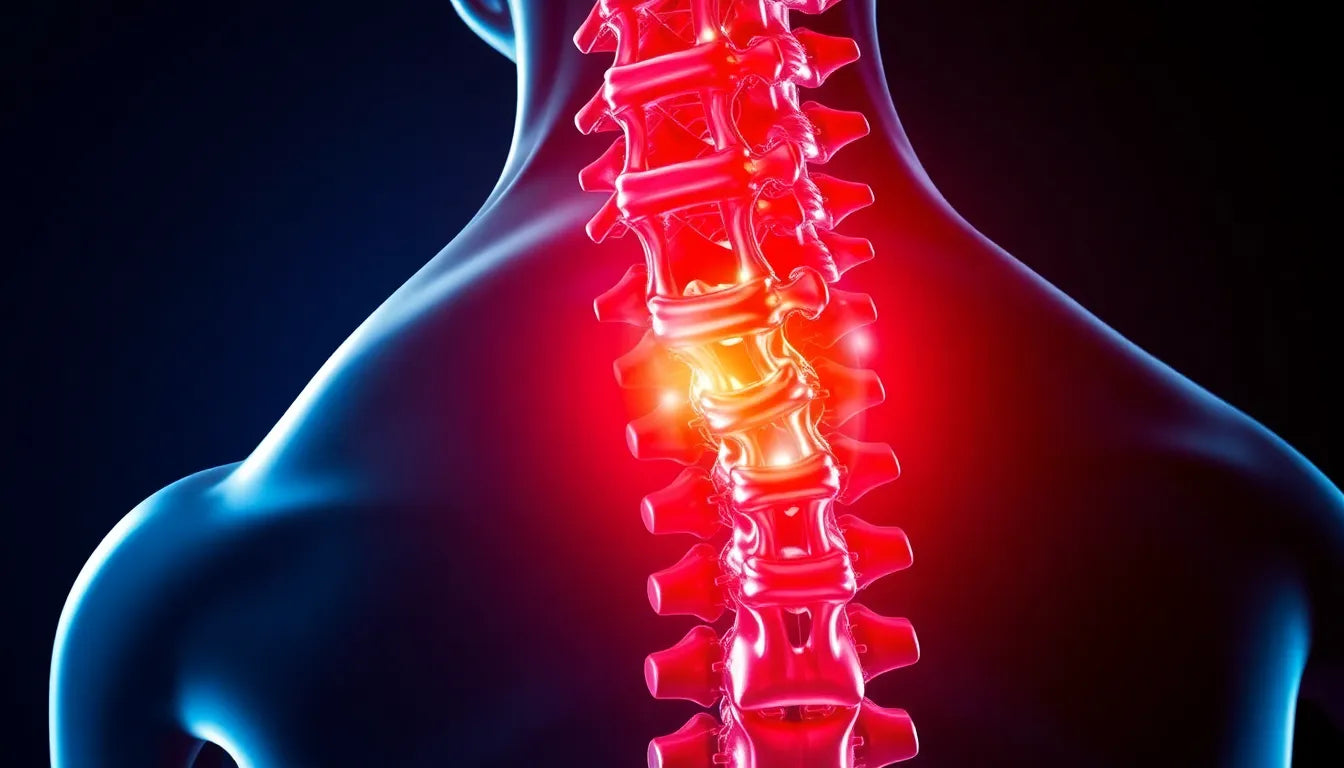Understanding the intricate relationship between a herniated disc and shoulder blade pain is crucial for those experiencing discomfort in this area. A herniated disc occurs when the soft inner gel of a spinal disc pushes out through a tear in the tougher exterior. This condition can affect various parts of the body, including the shoulder blade, due to the complex network of nerves running through the spine. Specifically, when a cervical disc in the neck herniates, it can press on nerves that extend to the shoulder blade, leading to significant pain and discomfort.
Shoulder blade pain resulting from cervical disc herniation is more common than one might think and can significantly impact daily life. This type of pain is often accompanied by a range of symptoms, including radiating pain that can extend from the neck to the shoulder blade and possibly down the arm. Individuals may also experience numbness, tingling, and muscle weakness in the affected areas. These symptoms can intensify with certain movements, such as coughing, sneezing, or turning the head, making it a persistent and challenging issue for many.
Why addressing shoulder blade pain is essential
Understanding and addressing shoulder blade pain caused by a herniated disc is vital for several reasons. Firstly, untreated pain can lead to chronic discomfort and further complications, affecting quality of life. Secondly, early intervention can prevent the condition from worsening, potentially avoiding the need for more invasive treatments such as surgery. By addressing this issue promptly, individuals can seek appropriate management strategies that alleviate pain and improve function.
This blog post aims to provide valuable insights and practical tips for managing and relieving shoulder blade pain associated with a herniated disc. Whether you're experiencing mild discomfort or severe pain, understanding the underlying causes and symptoms is the first step towards effective management. In the following sections, we will delve deeper into the medical explanations, symptoms, and causes, as well as offer patient-centric insights and practical tips for relief. Our goal is to empower you with knowledge and strategies that can help mitigate the impact of this condition on your daily life.
Understanding the medical explanation of herniated disc-related shoulder blade pain
A herniated disc, particularly in the cervical region, can have profound effects on the shoulder blade area due to the intricate network of nerves that traverse the spinal column. When a disc herniates, the inner gel-like substance protrudes through the outer layer, potentially compressing nearby nerves. This compression is especially relevant in the cervical spine, where nerves branch out to the shoulder blade and arm, leading to a cascade of symptoms.
The anatomy of the cervical spine is a key factor in understanding why shoulder blade pain occurs. Each cervical disc sits between the vertebrae, providing cushioning and flexibility. When a disc herniates, it can press on the nerve roots exiting the spinal cord, causing pain that radiates not only to the shoulder blade but also down the arm. Visual aids, such as diagrams of the cervical spine and nerve pathways, can be instrumental in illustrating how this compression leads to the characteristic pain and discomfort.
Recognizing symptoms and identifying causes
Common symptoms associated with a herniated disc affecting the shoulder blade include radiating pain, numbness, tingling, and muscle weakness. This pain often starts in the neck and travels to the shoulder blade, potentially extending down the arm. Activities that increase pressure on the spine, like coughing or sneezing, can exacerbate these symptoms. Additionally, head and neck movements can intensify the discomfort, making everyday tasks challenging.
The causes of a herniated disc can vary, with age-related degeneration being a significant factor. As we age, the discs lose water content, becoming less flexible and more prone to tearing. Injuries or trauma to the spine, as well as repetitive stress from poor posture or certain occupations, can also contribute to disc herniation. Understanding these causes is crucial for both prevention and effective management of the condition.
Patient-centric insights and real-life experiences
Hearing from individuals who have experienced herniated disc-related shoulder blade pain can provide valuable insights into the condition's impact. For instance, one patient shared, "The pain was relentless, affecting my ability to perform even simple tasks. It wasn't until I understood the root cause that I could start managing it effectively." Such testimonials highlight the daily challenges faced by those with this condition and emphasize the importance of early intervention and appropriate treatment.
Case studies often reveal that patients who actively engage in their treatment plans, including physical therapy and lifestyle modifications, report better outcomes. These personal stories underscore the importance of a proactive approach in managing symptoms and improving quality of life.
In conclusion, understanding the medical basis of herniated disc-related shoulder blade pain, recognizing its symptoms, and identifying its causes are essential steps in addressing this condition. By incorporating patient experiences and insights, individuals can gain a more comprehensive view of the challenges and strategies for managing this type of pain. In the next section, we will explore practical tips and treatment options to help alleviate shoulder blade pain and improve daily functioning.
Effective management and relief tips for shoulder blade pain
Managing shoulder blade pain caused by a herniated disc requires a multi-faceted approach. Here are several strategies that can help alleviate discomfort and improve daily functioning:
- Rest and activity modification: It's crucial to rest and avoid activities that exacerbate the pain. This includes limiting movements that strain the neck and shoulder area.
- Ergonomic aids: Using ergonomic aids, such as supportive pillows or chairs, can help alleviate pressure on the affected area. Adjusting your workstation to maintain proper posture can also be beneficial.
- Gentle exercises: Incorporating gentle stretching and strengthening exercises, as recommended by a healthcare professional, can promote flexibility and reduce muscle tension. These exercises should focus on the neck and shoulder regions.
- Physical therapy: Consider engaging in physical therapy sessions. A physical therapist can provide tailored exercises and manual therapy techniques to target the specific areas of discomfort.
- Chiropractic care: Chiropractic care can offer targeted relief by addressing spinal alignment and nerve compression. Consult a qualified chiropractor to explore this option.
Here's a quick checklist to help manage shoulder blade pain effectively:
| Do's | Don'ts |
|---|---|
| Engage in gentle neck and shoulder exercises | Avoid heavy lifting or strenuous activities |
| Use ergonomic supports at work and home | Don't ignore persistent pain |
| Consult healthcare professionals for tailored advice | Avoid self-diagnosing without professional guidance |
Concluding thoughts
Addressing shoulder blade pain from a herniated disc is essential for maintaining quality of life and preventing further complications. By understanding the condition and implementing effective management strategies, individuals can alleviate pain and improve functionality. It is important to seek professional medical advice to diagnose the condition accurately and explore suitable treatment options. Early intervention can significantly enhance outcomes and potentially avoid the need for invasive procedures.
Frequently Asked Questions
What are the symptoms of a herniated disc affecting the shoulder blade?
Symptoms include radiating pain from the neck to the shoulder blade, numbness, tingling, and muscle weakness in the affected areas.
How does a herniated disc cause shoulder blade pain?
A herniated disc in the neck can compress nerves that lead to the shoulder blade, resulting in pain and associated symptoms.
What treatments are available for shoulder blade pain from a herniated disc?
Treatments may include rest, physical therapy, ergonomic aids, medications, and in some cases, surgery, depending on the severity of the condition.
Can lifestyle changes help in managing this condition?
Yes, incorporating ergonomic adjustments, regular exercise, and maintaining good posture can help manage symptoms and prevent further deterioration.


















